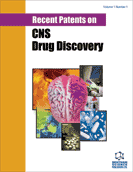Abstract
Multiple sclerosis (MS) is an autoimmune/ inflammatory disease of the central nervous system (CNS). MS affects more than two million people worldwide and has been recognized as the leading cause of neurological disability in young adults. MS has long been considered as a CNS disease of demyelination and inflammation. Axonal degeneration has however been increasingly accepted as a key pathogenetic element. Certain noninvasive tests such as optic coherence tomography (OCT), magnetization transfer imaging (MTI), and proton magnetic resonance spectroscopy (MRS) might be superior in early detection of axonal loss and neurodegeneration as compared to conventional neuroimaging studies. New therapeutic strategies targeting the neurodegenerative process in MS provide hope to the MS community. A number of phase II or III clinical trials that are designed to target such specific pathogenetic mechanisms include sodium channel blockers, matrix metalloproteinases (MMP) inhibitors, c-AMP selective phosphodiesterase inhibitors, NMDA receptor antagonists, amongst others. In the current review, we will discuss the current understanding of the mechanisms of neurodegeneration in MS, agents with neuroprotective properties, patents currently available and, their possible application in the treatment of MS.
Keywords: Multiple sclerosis, axonal injury, neurodegeneration, therapy, clinical trials
 5
5

